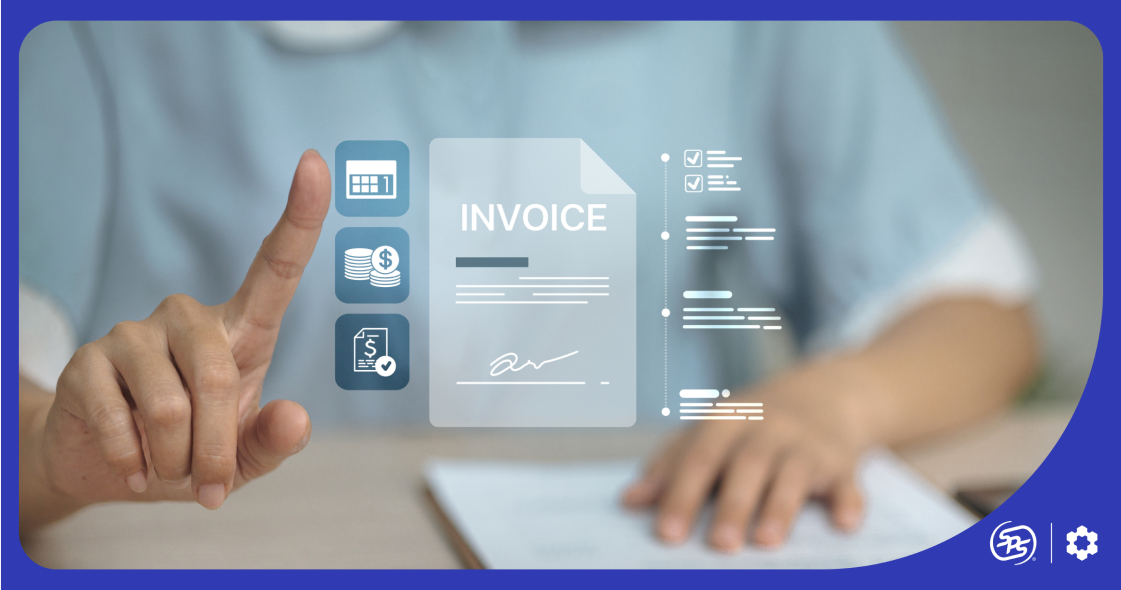Listen to This Article
Top Amazon Vendor News This Week
This week’s retail news reveals the ongoing evolution of both Amazon’s Vendor Central experience and the wider retail media landscape, two areas that continue to redefine how brands manage operations and engage customers.
- Amazon enhances invoice visibility for vendors: The Invoice Management page now shows detailed shortage reasons, including invoiced items from the same PO, deleted or missing appointments, overbilling, and unrecognized products. All this is done to help resolve disputes faster. Plus, a new Invoice Payments report on the Financial Reports page gives vendors comprehensive insight into payments, deductions, and remittance details for any selected period.
- Retail media scales from small businesses to supermarket chains: PayPal’s new Ads Manager lets small businesses easily earn from store traffic, while major grocers like Kroger, Albertsons, Ahold Delhaize, and Giant Eagle merge marketing, loyalty, and media teams into unified retail-media divisions. This marks a pivot toward a hybrid model where ads, merchandising, and customer experience work as one.
Let’s take a closer look at what’s driving these changes in this week’s retail news roundup.
Amazon Vendor News: Clearer Shortage Reasons and Smarter Invoice Payment Insights
Amazon is improving its vendor payment and invoicing systems with a focus on transparency. Two new Vendor Central updates give vendors clearer insight into shortages, deductions, and delays through more detailed invoice management reports and financial data. These enhancements should reduce payment disputes and speed up resolution times.
New Shortage Reasons in Invoice Management Page
Amazon’s latest update to the Invoice Management page introduces specific shortage reasons, giving vendors a clearer view of why payments are delayed or reduced.
Vendors will now see detailed shortage categories directly on their invoices, including:
| Supply Chain Issues | Description | Fix |
| Already Invoiced / Duplicate invoice | The same item billed twice across POs. | Match invoiced quantity to PO total |
| Overbilling | The invoiced quantity exceeds what was ordered | Bill only for ordered units; issue credit if overshipped |
| Deleted or No Appointment | Missed or canceled delivery slots | Ensure carriers meet delivery slot requirements |
| Unrecognized Product | The product ID doesn’t match Amazon’s catalog | Verify IDs for typos or mismatches |
| Canceled Items | Invoiced for items Amazon already canceled | Check PO status before invoicing |
| Product Not on PO | Product doesn’t appear on the order | Ensure invoiced product matches the PO or update catalog mapping |
| Unit vs. Pack Error | Quantity or cost doesn’t align with PO units | Confirm units and packs are consistent across PO, invoice, and catalog |
| Multiple ASINs | Product ID matches more than one ASIN | Use correct ASIN and fix catalog data |
| Late Shipping | Shipment arrived over 14 days late | Invoice on dispatch day and deliver within window |
| Wrong Product Received | Items differ from invoiced products | Align shipments with PO details |
| Unprocessable Invoice | Errors in tax or line-item data | Review and correct rejected invoices |
| Liquidated Products | Items not in the catalog were rejected | Ship only cataloged products |
| Price Variance | The invoiced price doesn’t match PO | Verify prices before invoicing |
Each defect now comes with root-cause explanations and recommended corrective actions, accessible via the More Info section on the Invoice Management page.
For example, if a vendor ships an updated version of a product not yet mapped in Amazon’s catalog, it may trigger a “Product Not Listed on PO” defect. The new system helps pinpoint this exact mismatch so vendors can either fix the catalog entry or contact Amazon for verification.
This change builds on the platform’s Financial Scorecard, which already highlights Amazon defect rates and amounts over time. By matching invoice-level visibility with scorecard metrics, vendors can now connect the dots between operational errors and financial outcomes (and ultimately resolve them faster).
Invoice Payments Report Now in Financial Reports Page
Complementing the shortage updates, Amazon has added a new Invoice Payments Report under the Financial Reports section. This feature lets vendors download comprehensive payment details, including invoices, deductions, and remittance information, for any time period.
Key Capabilities
- Full payment traceability: Vendors can see exactly how and when each invoice was paid.
- Custom report configuration: Filter by payee code, store, or date range for precise analysis.
- Bulk data export: Download CSV reports to reconcile payments at scale.
For example, a vendor facing recurring shortages across multiple ASINs can use the Invoice Payments report to identify which invoices had deductions, link them to specific shortage reasons from the Invoice Management page, and isolate systemic issues such as late shipments or catalog mismatches.
Together, these improvements reflect Amazon’s broader push to reduce invoice disputes and bring vendors more control over their payment timelines. Historically, many vendors struggled with limited visibility into deductions or mismatch reasons. With clearer shortage categories and detailed payment reporting, Amazon is finally closing that information gap.
Stop losing money to Amazon vendor chargebacks with 1P Revenue Recovery. Our automated deduction management solution identifies and disputes fees with a 99% success rate, putting money back in your pocket without the hassle. Start your free recovery audit now.
From Grocery Giants to Small Businesses, Advertising Gets a Major Makeover
Retail media, once the exclusive playground of giants like Amazon, Walmart, and Kroger, is evolving fast. In a wave of reorganization and innovation, everyone from supermarket chains to small online sellers is rethinking how they use ads, data, and digital experiences to drive growth.
Grocery Chains Go All-In on Retail Media Integration
According to Modern Retail, major US grocers are recognizing that retail media isn’t a side business; it’s critical to where the industry is headed.
Kroger, for instance, merged its consumer insights arm (84.51°), loyalty marketing, and retail media into a unified division: Kroger Precision Marketing powered by 84.51°. This consolidation lets its teams speak the same language when working with brands, reducing friction and improving campaign effectiveness.
Albertsons followed suit after its failed merger with Kroger, bringing its digital experiences, loyalty, and advertising business (Albertsons Media Collective) together under one roof. SVP Brian Monahan describes the shift as transforming into a “hybrid retail-media company” where media is now a key growth pillar rather than a side project.
Ahold Delhaize USA, parent of Food Lion, Giant, Hannaford, and Stop & Shop, has gone even further, integrating digital merchandising and marketing into its retail media operations. The goal: ensure ads link to seamless shopping experiences, from accurate product pages to smooth checkout journeys.
Lastly, Giant Eagle also reorganized to put merchandising, marketing, and retail media under one leadership team, aiming to “align incentives and outcomes” across the business.
This wave of restructuring points to a fundamental change: retailers are no longer separating ad sales from store strategy. Every click, cart, and campaign now connects to the wider customer journey.
As AWS’s Scott Langdoc observed, the rise of chief data officers and digital merchandising teams shows how deeply retail media is reshaping company structures. “Retailers are breaking apart traditional leadership roles,” he said. They’re getting hyper-focused on the areas that drive measurable results–data, analytics, and digital execution.
PayPal’s Big Move: Bringing Retail Media to the Masses
While large grocers refine their retail media machines, PayPal is flipping the script for small businesses. The company recently announced PayPal Ads Manager, a new platform that allows millions of small and mid-sized merchants to create their own retail media networks, with zero upfront cost.
Here’s how it works:
- Merchants simply opt in, integrate a Software Development Kit (SDK) into their site, and set ad preferences (e.g., block competitors from advertising in their store).
- PayPal automatically serves relevant ads to their visitors.
- Businesses earn ad revenue every time an ad runs, income they can reinvest into marketing, inventory, or staffing.
- All performance metrics live inside the PayPal Merchant Portal, alongside existing business tools.
By leveraging PayPal’s transaction graph, a data set showing real purchasing behavior across millions of merchants, advertisers can reach high-intent shoppers, not just casual browsers.
A merchant, for instance, could implement the SDK and immediately start earning from non-competing ads (ads that do not promote a product, brand, or service that directly compete with the merchant). With no technical expertise required, this move effectively democratizes the retail media model once dominated by big players like Amazon and Walmart.
In short, the retail media is moving into every corner of commerce. From Kroger’s precision marketing to PayPal’s democratized ad tools, the next phase of retail media will reward businesses that blend data, creativity, and collaboration into one cohesive strategy.
Other Amazon Seller News This Week
1. Amazon Ads Enhances Branded Search Metrics
Starting October 1, 2025, Amazon Ads is improving branded search tracking with better brand matching that captures abbreviations and misspellings. This gives advertisers a clearer picture of product discovery across all regions and AMC reports. Watch for changes in metrics like branded search rate and cost per branded search, especially if brand awareness is key to your strategy.
2. Manage All France EPR Compliance In Account Health (Now Including Sanitary Textiles)
Amazon is centralizing France’s EPR registration in the Account Health dashboard from October 2025. Sellers must submit registration numbers for all categories, including new sanitary textiles, by December 31, 2025, or face automatic enrollment in EPR Pay on Behalf. This simplifies compliance but requires prompt action.
3. Amazon Launches New AI-Powered Device Lineup
Amazon’s new smart devices blend AI and personalization across its ecosystem. The lineup includes an affordable 4K streamer, the first color Kindle Scribe, upgraded Echo devices, and high-clarity security cameras. Each product embodies Amazon’s “ambient intelligence” vision, technology that adapts intuitively while fading into the background, advancing smarter homes and entertainment.
Leverage Vendor Central’s Payment Insights and PayPal Ads
Amazon is giving vendors better payment visibility and dispute tools, while retail media grows beyond big retailers to small businesses via PayPal Ads Manager. Success increasingly depends on mastering both operational control and media monetization.
Here are a few ways to make these developments work for you:
- Audit early, invoice cleanly: Use new shortage and payment reports to fix billing and catalog issues before Amazon flags them.
- Track trends, not transactions: Compare Invoice Management and Payments data to catch recurring defects or pricing errors.
- Automate where you can: Carbon6’s revenue recovery solution tracks deductions and keeps records clean.
- Think beyond operations: Try new ad formats or PayPal’s Ads Manager to turn traffic into revenue.







